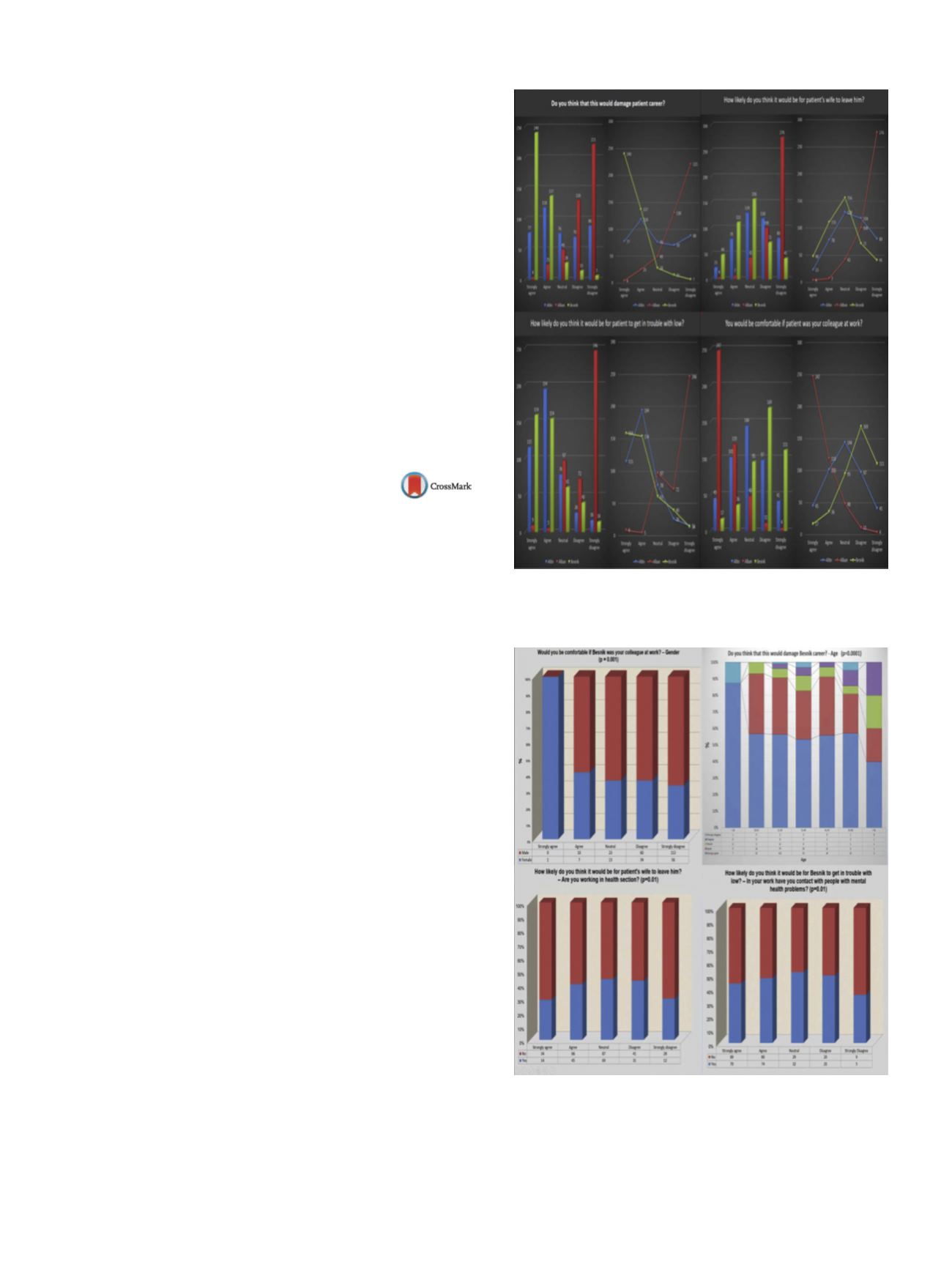

25th European Congress of Psychiatry / European Psychiatry 41S (2017) S521–S582
S573
(2) to evaluate the reliability and cross-cultural applicability of this
measure.
Methods
The SRS was administered to 30 psychiatric patients
and their nominated relative/friend. The cross-cultural evaluations
were conducted using focus groups of Ethiopian (
n
= 30), Australian
Indigenous (
n
= 100), Iranian (
n
= 22), and Indian (
n
= 50) partici-
pants.
Results
The SRS demonstrated moderate to high inter-rater
reliability and patient-informant concordance. The social ritual
domains were found to be valid, well understood and applicable
across the sampled cultures
[1] .Conclusions
The concept of social rituals and the SRS instrument
were demonstrated to be feasible, reliable and cross-culturally
applicable tools for measuring changes in people’s appearance and
behavior that might be indicative of emerging mental illness.
Disclosure of interest
The authors have not supplied their decla-
ration of competing interest.
Reference
[1] JancaA, Ventouras J. Measurement inpsychiatry: novel concepts
and instruments. Advances in Psychiatry 2005;II:89–93.
http://dx.doi.org/10.1016/j.eurpsy.2017.01.849EV0520
Stigmatization of mental health
problems in Albania, ways of
diminishing it
T. Jupe
∗
, F. Elezi , B. Zenelaj , E. Myslimi
UHC ‘Mother Tereza’, Psychiatry, Tirane, Albania
∗
Corresponding author.
Background and aim
More recent definitions of stigma focus on
the results of stigma – the prejudice, avoidance, rejection and dis-
crimination directed at people believed to have an illness, disorder
or other trait perceived to be undesirable.
Methods
During this study, we used Attitudes to Mental Illness
Questionnaire (AMIQ), which helped us to understand the differ-
ences in the acceptance by the population for 3 different types of
diseases: addiction, diabetes and schizophrenia.
Results
(1) Alban has diabetes. (2) Besnik has schizophrenia.
Conclusions
(1) The patients with schizophrenia have higher
levels of stigma compared diabetic patients or those alcoholics
( Tables 1 and 2and
Fig. 1 ). (2) Statistical processing carried out
concluded that have statistically significant differences between
gender-stigma (
P
= 0.001), age-stigma (
P
= 0.0001) and education-
stigma (
P
= 0.001)
( Fig. 2 ).(3) Health care workers stigma is exactly
the same as in general population (
P
= 0.01)
( Fig. 2 ).Recommendations
– Support recovery and social inclusion and
reduce discrimination.
– Do not label or judge people with a mental illness, treat them
with respect and dignity as you would anyone else.
– Do not discriminate when they come participation, housing and
employment.
Fig. 1
Fig. 2


















